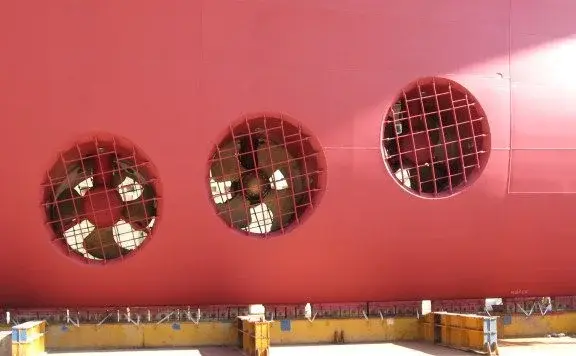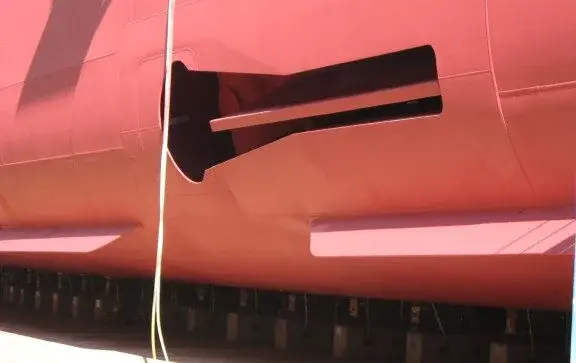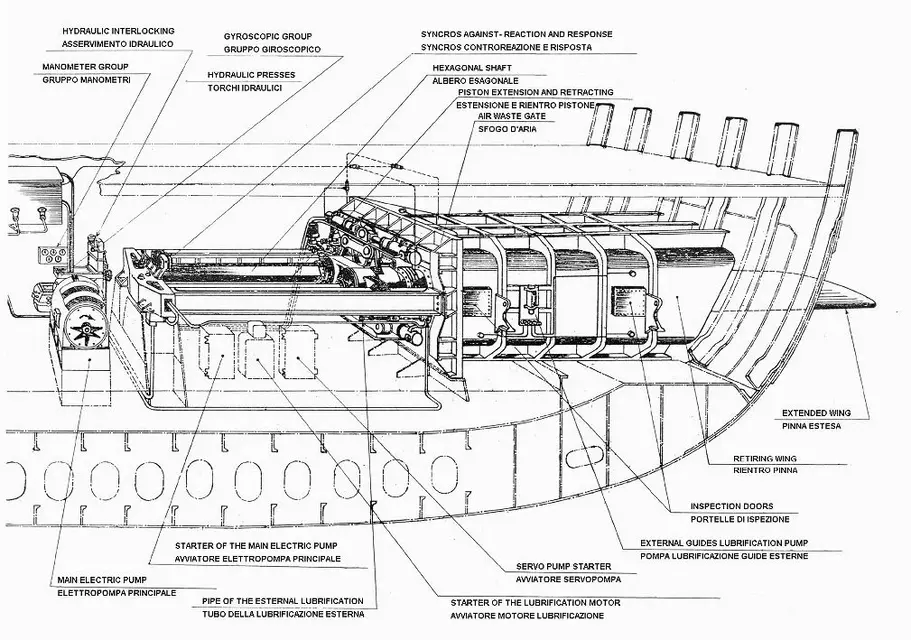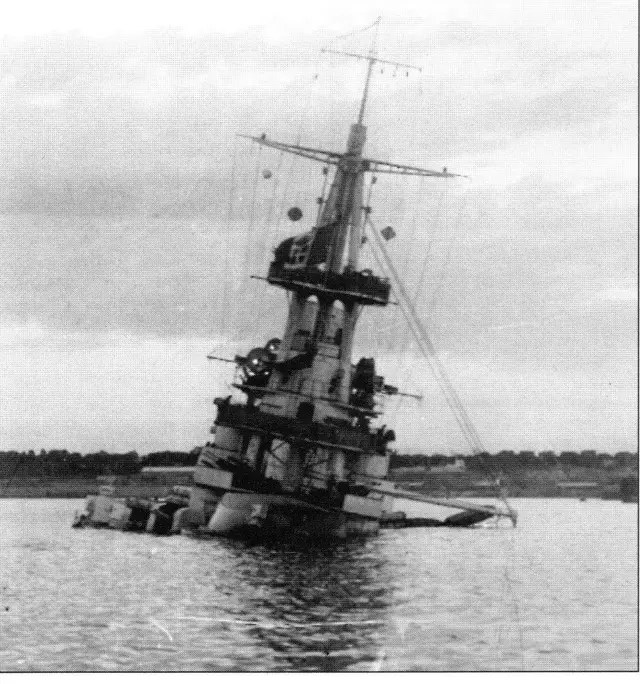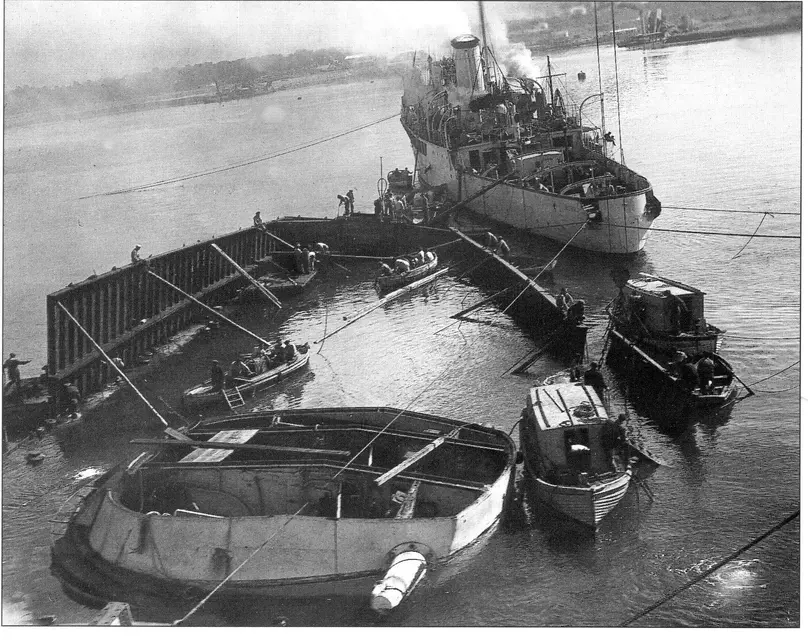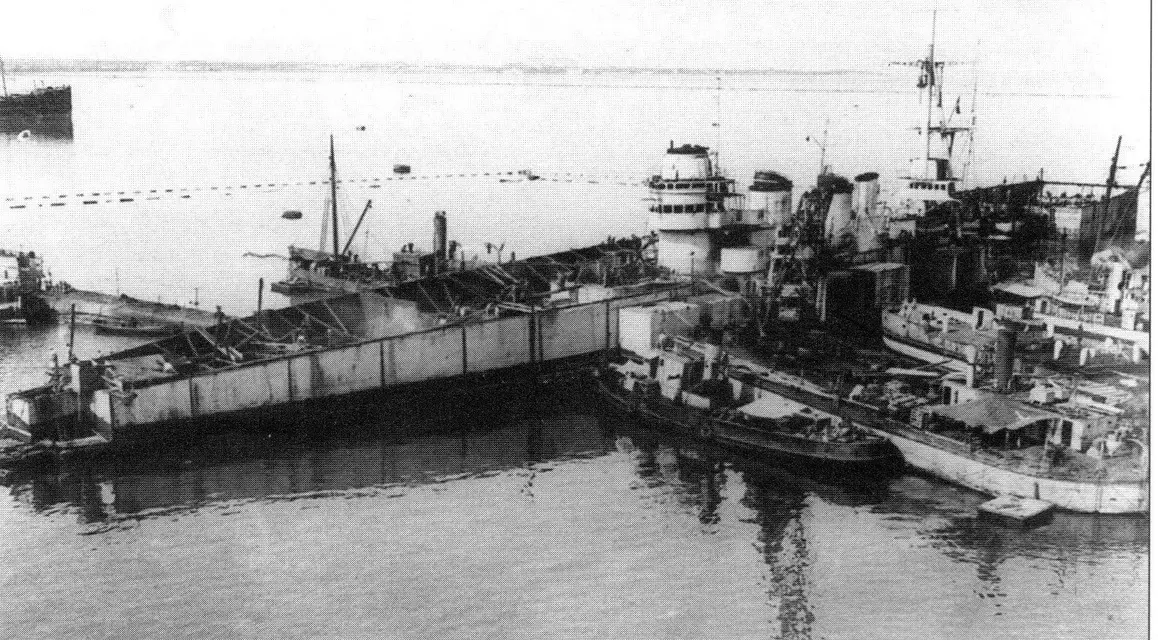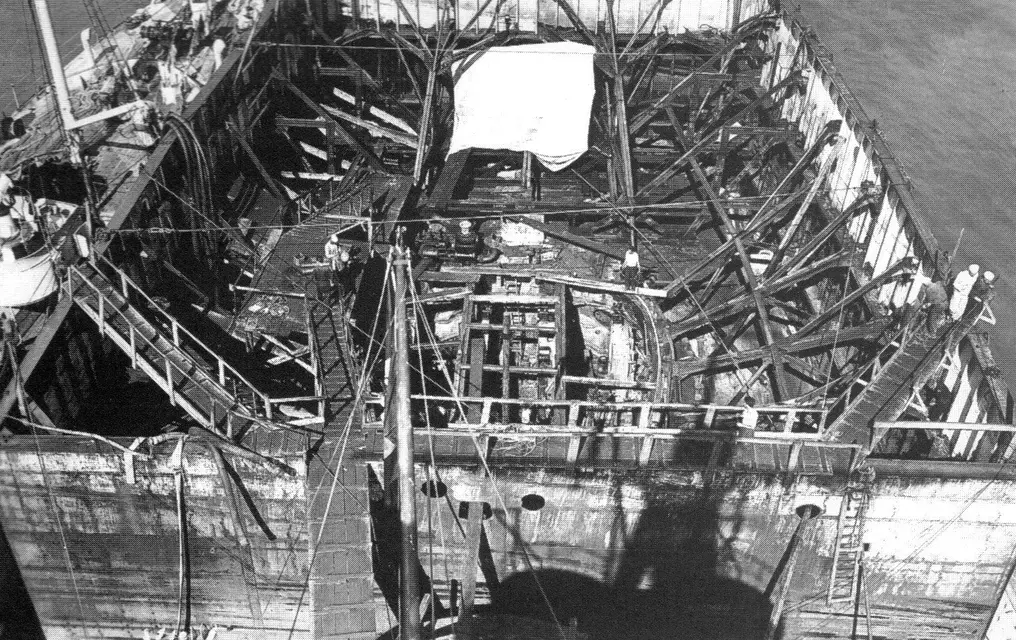a difficult recoveryon the evening of 11 November 1940 twenty “fayrey swordfish”, taken off from the carrier hms “illustrious”, attacked in two successive waves the Italian ships to the bottom in the great sea of the port of taranto. in a few minutes, three of the six battleships of which the director had until then, were put out of combat. the “littory” was hit by three torpedoes while “duilio” and “conte di cavour” took one each.
but while the first two were promptly brought to the bottoms, which allowed, despite the serious damage, to bring them back quickly afloat, the “cavour” was brought to the enchantment with guilty delay.
with the fully submerged hull, it took eight months for the complex recovery operations.
we see how such operations were carried out.
an air mark ii heated by 457mm, with an explosive charge of 170 kg and a steel type “duplex” i.e. shock and magnetic, exploded at 23.15 under the hull in the zone between the control tower and the tower above high of prora (the "b") opening a flaw of 12 x 8 meters and affecting the premises between the ordered 24 and 36 and the attached deposit.
the squarcio involves the immediate flooding of the ammunition stores of large and medium caliber, the local refrigerators, the viroles of the towers a and b. waterways affect the adjacent premises mainly because of infiltration between the stagnated passages of the electric cables. Fortunately the ship is already located with the sealed doors closed after the air pre-awakening of the territorial contraerea (dicat). the left anchor falls on the bottom as a result of the rupture of the deemed draft while the large pump exhaustion of prora cannot be started due to the impossibility of manoeuvre the discharge valve at sea blocked by the explosion of the siluro.
after the request repeated three times by the commander of the ship (c.v. ernesto ciurlo), that it still arranged the installation of the motors remaining indenni, finally between the 23.20 and the 23.45 arrive in rescue two trailers to which the cables of trailer have passed. after 15 minutes, the ammunition of the Brivonese takes command of the operations. at 00.30 one of the two trailers is recalled under the left mascone to use the means of exhaustion but the "tenace" has not with if the suitable sleeve therefore another trailer is sent in arsenal to pick it up. after more than an hour the trailer returns with the necessary sleeve while in the meantime the “vigorous” rim joins operations.
but other time is wasted in an attempt to “spin” the pump (which only manages at 04.00).
meanwhile the prora dive reaches 01.55, 14.3 meters against 10.4 normal, increasing about 50 cm per hour. at 04.15 the water reaches the cubes and submerges the prodier part of the blanket. Finally the trailers begin to move and the great battleship slowly turns towards lower backdrops. at 05.00, with an immersion of 17.15 meters, the prora of the cauliur touches the bottom. after ten minutes, during which the ship has remained horizontal, the hull begins to tilt straight reaching quickly the 10th of displacement. at this point is given the order to attach 5 compartments to the left but the drought, although slowed down, continues to reach 45°. then at 08.00, after all the crew was disembarked and the boilers were turned off, the ship radrizza transversamente and the stern leans on the seabed.
in the morning of the cauliur you can see only the highest superstructures slightly disbanded straight. the hull is completely immersed in a mudbed of about 18 meters a short distance from the pier “chiapparo”, the deck is about 4 meters from the surface while that of castle at about 2.
recovery operations immediately appear complex and probably not convenient. the cauliur is a ship with intrinsic structural weakness and the construction solutions that have already been overcome also evidenced by the severity of the damage reported. Although modernized between 1933 and 1937 by adopting brilliant technical solutions, the original defects were not completely eliminated. For example, with regard to underwater protection, also the adoption of the excellent “pugliese cylinders” has been conditioned by problems of space for which the structures are undersized. the structure of the bottom proves fragile and particularly vulnerable. to this is added the shortage of workers and materials mainly engaged in the work on litigation and duilio. for these reasons regarding the recovery of the great ship the decision late to arrive.
At the end, the general of the naval genius umberto Apulian, a planner of the quarrel but dismissed in 39 following racial laws as a Jew.
Apulian calls to itself the best technicians available by establishing an exceptional team. the palombari carry out the checks of the damage then begin the works of lightening disembarking the weights placed higher. is removed the tree, the armoured tower of the direction of the shooting, the secondary weapons from 120mm, the anti-aircraft, the entire tower “b”, the weapons of the tower “c” and part of the tower “d” completely submerged. to protection of the hull is placed a parasiluri net while the intervention of a Trieste firm, tripcovich, specialized in naval recoveries is required.
the recovery project previews the closure of the main foul the installation of two "tures" to prora and aft to bring the walls beyond the level of the sea. At this point you can start emptying the hull by means of pumps while simultaneously eliminating the threads between compartments. aft they have installed “pump cylinders” to ensure floatation and stability.
in March of 41 the first elements of the prodier can be installed by pointing them and making them ponds and on April 1 the operation is completed.
thanks to powerful pumps you immediately begin to exhaust the premises of prora while in the aft you place the cylinders of push and you begin to mount the relative.
the ship takes off from the bottom and slowly, begins to rise.
on 20 June the castle bridge emerges from the waters while the tower “d” is completely dismantled. finally on July 2 also the stern returns afloat and the tures can be dismantled having finished their task. when the fishing reaches the 12 meters the battleship is in condition of being towed in the faking basin even if to compensate for the weight of the water still contained in prora, three of the cylinders used for the float are arranged in a stern in blanket.
on the morning of 12 July, with all the crew deployed on deck and the flag at the peak, the cauliflower, with the help of 6 trailers, enters the small sea and heads towards the floating basin go12.
after three days the hull is now dry and an accurate inspection begins.
Actually, the battleship is little more than a wreck. the engine apparatus, despite not having suffered direct damage from the explosion of the torpedo, remained eight months under water.
all electrical system, wiring, equipment, must be replaced. turbulent groups and sleeping boilers recoverable in the face of a big economic commitment. However, the works resume and start by landing the three cylinders while the “cabiniere hat”, i.e. the characteristic telemetric turret armoured, resumes its place over the tower. In the meantime, the engine system is restored and the internal premises are shaved.
the works are much more challenging than expected and require a month and a half more than initially estimated. in December, however, the cauliur is able to move with its own means, although still devoid of the main and secondary armament, and starts to reach Trieste where it would have finished the preparation.
is the last trip of the old battleship. the few resources available are used for the completion of the “roma” before and of the “empire” after (the latter never ended).
in June 43, when the fate of the conflict is now irreparably compromised, it is decided to permanently suspend the work. on the evening of September 10, after having secured the fighting flag, the cauliur is abandoned. the Germans judge it not usable and have the cannibalization of what can be reused.
now partially dismantled, it remains at the mooring under two allied bombings following which it turns up sinking.
the partially emerged hull remains there until 1951 when it is re-launched and then demolished.
in the course of the war he had only had the opportunity to confront the enemy once on the occasion of the battle of peak stylus.
It remains to be wondered why it was decided for an economic and industrial commitment so heavy considering that it was still a ship over and not without defects. It is curious to remember that even the twins demonstrated a chronic transversal instability. the “julio cesare”, ceded in the post-war period to the Soviet union paid for war damages, quickly fell overturned as a result of the explosion of a mine under the hull, while the “leonardo da Vinci”, sank to taranto in 1916 after the explosion of the poppiero deposit of ammunition that caused it also in this case, the overturning.
Annexes:
1) the point where the fault occurred
2) the ship sunk
3) you start placing the “tura”
4) the tures mounted and the ship that begins to rise
5) complete tura.

